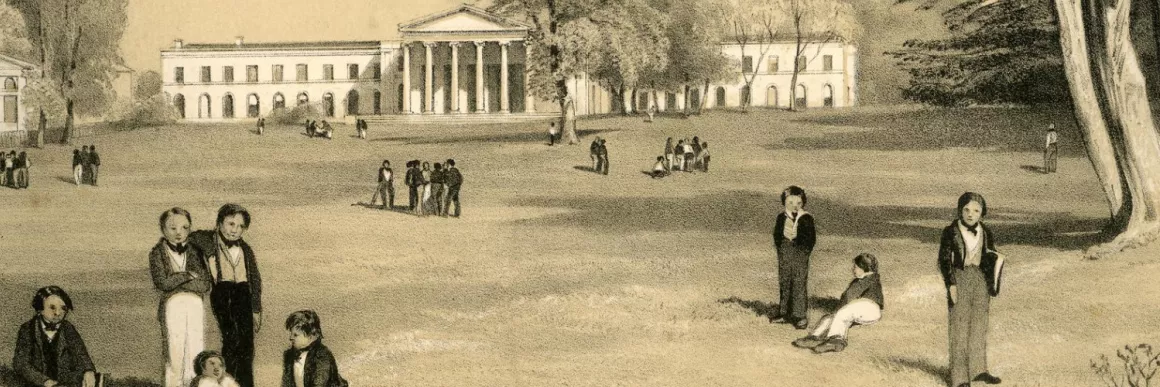For the past several years Romantic Circles Pedagogies Commons has published special volumes that speak to specific issues within romanticist pedagogy, such as Romanticism and Technology, Teaching Global Romanticism, or Teaching the Romantic with the Contemporary. For this 2-part volume, assembled during the COVID-19 crisis, we purposely stepped back and focused more broadly on essays that offer innovative approaches to teaching Romanticism. By focusing on innovative pedagogies that seek to redefine “the Romantic” in various ways and consider Romanticism as a place of engagement rather than administration, we hope to rethink rather than recapture some of the more universalist claims for our discipline. The essays collected are keen examples of this revisionary and processual pedagogy. They ask us to reconsider our relationship to the two key moments of any pedagogical project, what was and what is yet to be.
Abstract
Why all of this interest in pedagogy at this particular moment? One answer may be that when we are in the classroom, however that may look (my current classroom during the 2020 Covid-19 pandemic is virtual and distanced), we are best positioned to see the text from a new perspective and to discover a new relation of text to world. The inherent multiplicity of the classroom situation, and its ever-varying constituencies, makes this possible.
“A copious and splendid command of language and an ear tuned to the ‘noiseless music of the spheres.’” Elite Education in the Romantic Period and Its Modern Uses in Teaching and Scholarship
Catherine RossAbstract
This article offers fresh and detailed information about how the elite schools and colleges of Oxford and Cambridge educated many of the canonical writers and public men of the Romantic Period. While these schools excluded women and non-Anglicans, they offered their students—among whom numbered Percy, Cowper, Darwin, Crabbe Wordsworth, Coleridge, Southey, Byron, Shelley, Sidney Smith, Canning, and most of the clergymen and men of state—a remarkable program of linguistic, mathematical, and theological training.
Abstract
In this speculative essay, a professor and eight undergraduates reread Sense and Sensibility in light of the possibility that Marianne becomes pregnant when she and Willoughby visit Allenham House.
Abstract
In this article, I examine my recent experience in teaching a spring semester literature module to undergraduates. The module is centered around the critical concept of the “brown study” in William Cowper’s evening meditation in The Task. The fading twilight in the winter evening of Cowper’s meditation leads him to reflect on the place where he produces literature about nature: inside in his brown study. The class begins with an examination of the critical concept of the brown study as a commonplace in eighteenth- and nineteenth-century literatures.
Ideal Presence and the Past and Present Acoustic Ecologies of Romanticism: Reader–Listener–Performers and Their Recitations and Auditory Translations
Carrie BusbyAbstract
Because acoustic ecologies occupy a central presence in William Wordsworth’s poetry, I call for consideration of the power of speech and sound in the teaching of Romantic poetry and insist that students learn the task of close listening, becoming readers–listeners–performers in their literary study. Technologies of the past and the present offer ample methods for experimenting with Romantic texts and auditory translations in terms of reciting, analyzing, translating, remixing, performing, and preserving Romantic poetry in and for the future.
Abstract
While we now know that much of the early reporting after the mass shooting at Columbine High School was incorrect, including the portrayal of the shooters as social outcasts and victims of chronic bullying, the effects of explaining that violence as retaliatory against a culture of elitism and cruelty remain. Students reading Frankenstein today—steeped in narratives of mass shootings—are influenced by parallels between how we characterize the motivations of mass shooters and Shelley’s creature. But Shelley’s text offers students more than these parallels.
Abstract
In this essay I relate how a last-minute teaching assignment in an area outside my expertise led to a semester of teaching that was, by necessity, spontaneous and experimental, and how that first exciting semester set the course for a class that made not only poetry, but living itself, an object of critical inquiry. The title of the essay, Living Romanticism, indicates what the two aims of the course became: to suggest to my students that Romanticism is still alive, and second, to offer Romanticism as a way of living.

